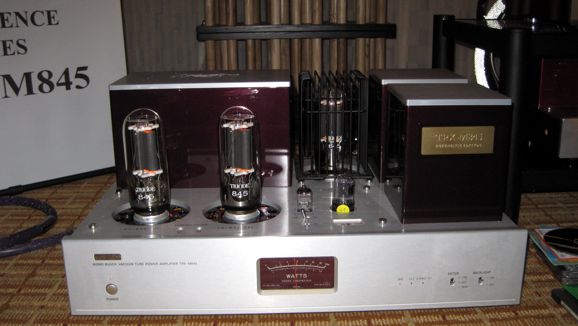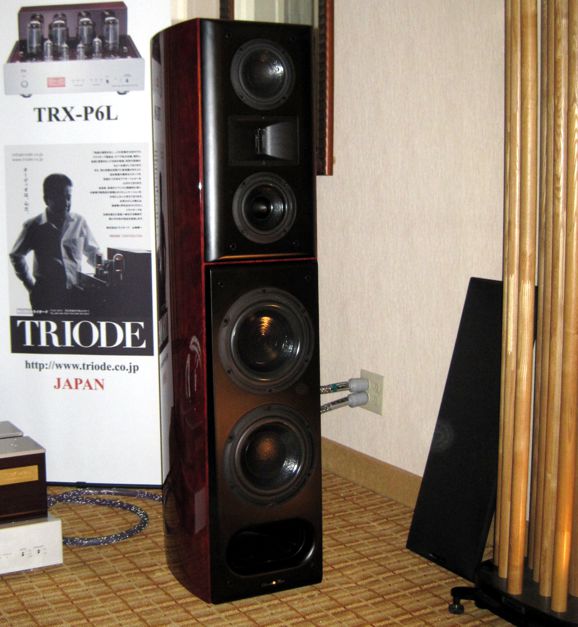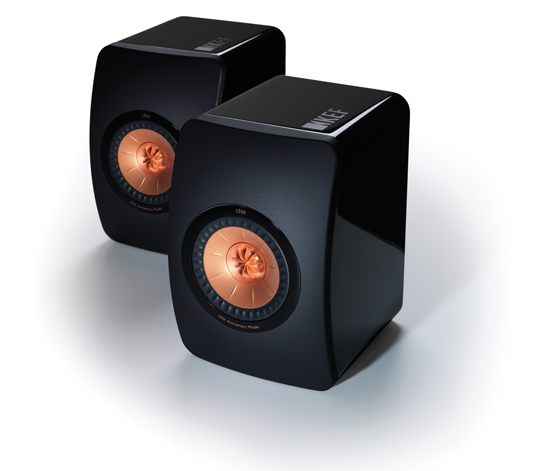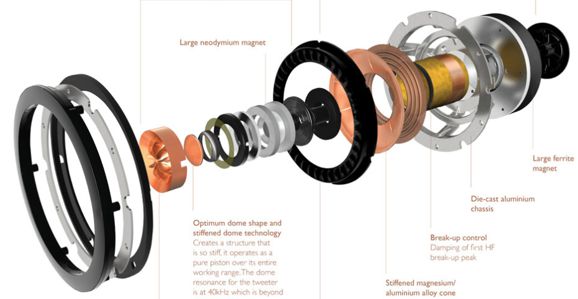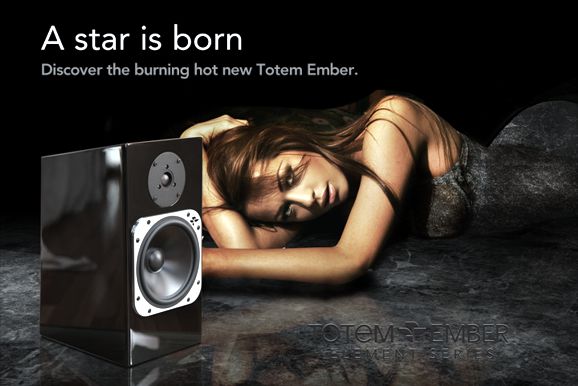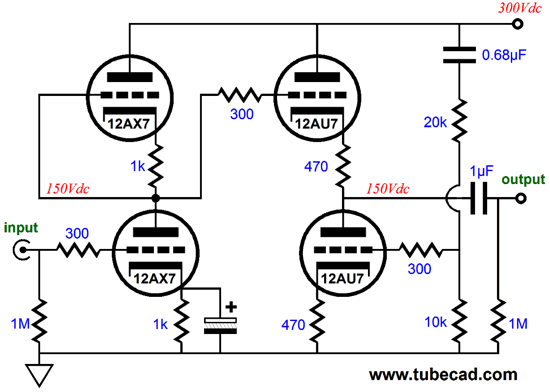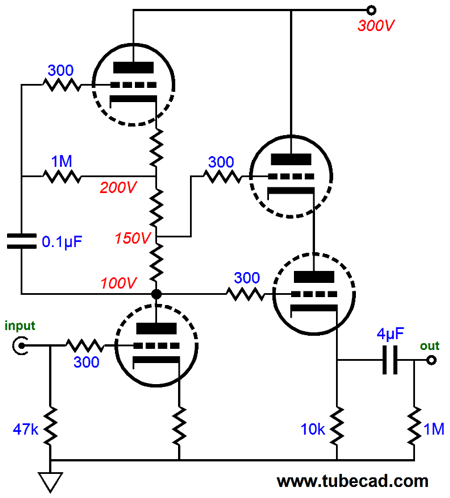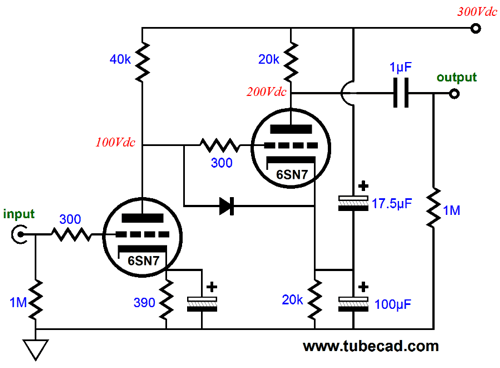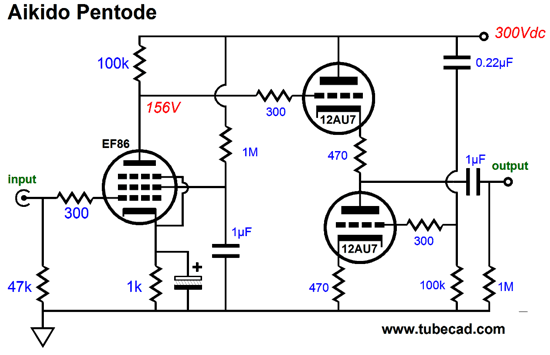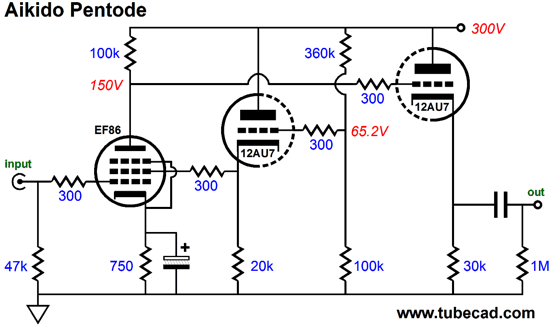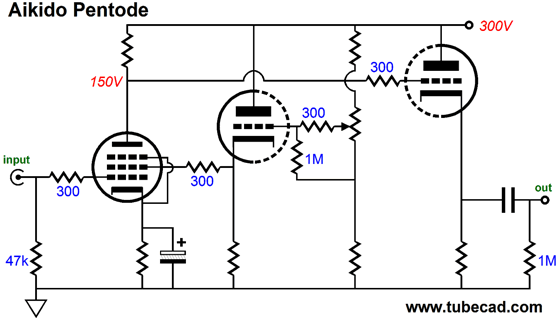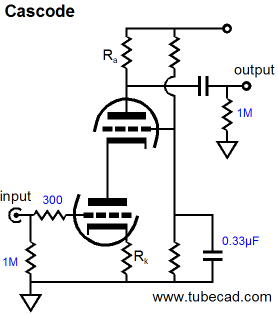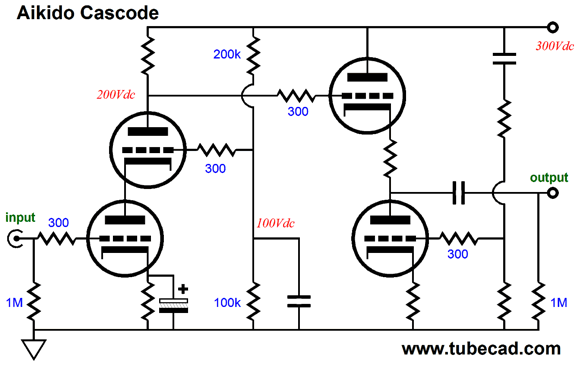| John Broskie's Guide to Tube Circuit Analysis & Design |
| Post 247 21 October 2012
RMAF 2012 Fewer attendees can have its silver lining, as it will result in less noise, less door openings, less of a wait at the elevators. Of course, for those showing, fewer ears disappoints greatly. Gray shadows, however, overwhelmed silver linings. I, and just about everyone I spoke to, sensed something ominously wrong this year, something beyond audio's uncertain future. The gentle, tame, and lamb-like audiophiles were not alone, as the aggressive, grasping, and rapacious salesmen stalked the showrooms and halls in search of prey. This is nothing new, but the larger ratio between wolves to sheep made the wolves easier to spot. Moreover, the wolves were hungry. In a packed elevator, seven silent sheep listened to three wolves bemoan the scarce and skinny wallets to be had. In years past, they would have talked about the wife and kids—but then, in years past, their bellies would have been full. I am not talking about the designers, the owners, and the hangers on, but that breed apart, the salesmen, slick and smiling, with darting eyes, as predatory as they are shameless. No doubt, wherever there are expensive trinkets to sell, these mercenaries of merchandise will be found. And with turntables and loudspeakers that require a second mortgage to buy, these rapacious salesmen are not hard to find, alas.
Best Sound at RMAF By the end of my last day there, I was more than a little bored and irked by the lousy music and the few good music selections being beaten to death from their repeated playing. It was close to closing time and I forced myself to walk into another showroom. I am, however, absolutely glad that I did. In Room 1009 of the Marriott Tower, I discovered Triode Corporation and Acoustic Zen products.
Triode Corporation makes a beautiful parallel, single-ended, 845-based power amplifier. This amplifier powered Acoustic Zen Crescendo speakers.
The resulting sound was breathtakingly natural. It flowed with ease and grace, pouring out the best sound I have heard at any audio show—and I have been to plenty. At first, I was startled, much as if I had found true love in the wrong place or honesty in a used car lot. Who would ever expect to hear blissful music reproduction at an audio show? Not me. But there it was, supple, natural, effortless. I wanted to find something wrong with it. Surely the highs were truncated, but they weren't. Well, the bass must have been a tad thin, but it wasn't. After days of listening to meretricious sound systems—by the way, "meretricious" does not mean deserving of merit, just the opposite—I had grown accustomed to boom and sizzle. Real bass and real highs, like real inner worth, are not showy. Here is an analogy. Long ago a friend told me that his girlfriend was perfectly lovely, which surprised him greatly. He had seen her many times before, behind the counter of his favorite coffee shop, but she never dazzled him. One day they actually spoke, beyond greetings and chit chat, and found that they had much in common. Soon they were dating. Then, one day, he realized that she was perfectly formed and that not one aspect of her could be altered without harm to the perfection she exemplified. For example, her hair was brown, not golden blonde or fiery red or raven black, just brown; but changing her hair to one these other colors would only diminish her beauty. She was neither tall, nor short, neither skinny, nor rounded, just medium height and build. Yet, he could not imagine any improvement from her toes to her head, as she didn't need any—all was in proportion and harmony. My friend was troubled because he thought he desired and had hunted for someone flashier, sexier, something more obvious, such as large fake breasts and bottled blonde hair. He was also disturbed that he didn't see how truly lovely she was at first—was he really that shallow? In many ways, he had spent a life being trained not to see the perfect female form in its natural splendor. Well, I wondered how many had walked into this same room and heard the same glorious sound and yawned. "Where's the boom and sizzle?" they would ask and leave. I am a huge fan of transmission-line loudspeaker cabinets and I have built many. So, I am doubly embarrassed for not having instantly appreciated the fine bass from the Acoustic Zen Crescendo speakers, a transmission-line enclosure. (When I was a college student, a famous audio reviewer dropped by to hear my famous dual transmission-line sub-woofers. He wasn't impressed—at first. The speakers were as large as a coffin and weighed twice as much, so he expected SPecTacUlar sound. Instead, natural bass filled the room. But once the recording of Mahler's 3rd hit its deepest notes, he nearly doubled over, as if he had been punched in the stomach. I am lucky he didn't have a spontaneous bowel movement. The sub-woofer didn't create bass where there was none, but if the recording held true deep bass, it reproduced it faithfully.) I am glad that I didn't stroll into this amazing room on the first day, as it would make all the other rooms sound even worse. Okay, I better back off a bit. To be honest, there was more good sound than worse sound at the show. Some of it very good indeed. It is just that the Triode Corporation and Acoustic Zen room held magic, something that was missing in all the other rooms I visited, alas. Indeed, I thought the new Martin Logan speakers sounded quite promising and I absolutely fell in love with two mini monitors from England, which sounded as good as they looked.
At a much lower price point, the KEF LS50 won my heart and ears. This little speaker can dance. Pick your five favorite audio adjectives and they probably will apply to the LS50 speakers, great imaging, articulate, quick and agile—even big bass. I was convinced that a subwoofer hid behind curtains, but the LS50s provided the only bass. Amazing. The adjective that I found myself using was "fun." These are fantastically fun speakers. Being little high-tech wonders, the LS50s are filled with innovations, such as soft ports, advanced materials, and a coincident drivers (the tweeter sits at the center of the woofer). They only cost $1500 the pair; and if they could fit in my Christmas stocking, there is nothing that I would prefer finding inside.
A Good Omen, Perhaps?
Maybe this harkens a return of animal spirits in audio.
High-Gain Tube Circuits The Aikido topology delivers a gain equal to about half of the mu of the input tube used. For example, a 12AX7 input tube presents a mu of 100, so a gain of x50 (+34dB) can be realized. While this seems like plenty, more gain may be needed. We could bypass the bottom cathode resistor in the input stage, but this will only increase the gain to about 60 to 70.
(Note the 20k & 10k power-supply-noise voltage-divider resistors, which are just guess-estimates on my part.) If we need more gain, something like the following can yield close to the mu of the triode used in the first stage. Yes, it does look a lot like an SRPP frontend, but as the first stage doesn't really encounter any load, the circuit cannot push and pull.
Do not forget that the external load is a critical part of the SRPP circuit. In this circuit, the top triode in the first stage functions as something approximating a constant-current source. Okay, why not just use the SRPP stage and forgo the modified cathode follower? Prejudice, prejudice on my part. I always strive to unburden the gain stage entirely, so that its only job is that of developing voltage gain. The SRPP stage performs two tasks: it provides gain and drives the external load. Nonetheless, the maximum gain realizable from an SRPP stage is always less than the mu of the bottom triode used. So, how do we get a gain higher than the triode's mu? One approach is to cascade two grounded-cathode amplifiers.
The above circuit realizes a gain of about 320 (+50dB), which is plenty—even scary—high. The 17.5µF capacitor was added to achieve one of my signature Aikido-noise-reduction techniques. Of course, some tweaking would be required; if for no other reason that electrolytic capacitors are usually way off their marked values.
Aikido Pentode
The Aikido cathode follower (ACF) receives 100% of the power-supply noise at its bottom triode's grid. The result is that noise nulls at the ACF's output. Okay, great, can we stop here? Well, that depends... Note the number of quality signal capacitors within the circuit: three. If you are the type of audio DIYer that buys $140 boutique capacitors, then the following circuit might be more to your wallet's liking.
We have the same number of tubes, but two fewer capacitors. The pentode's 2nd grid (screen grid) is driven by a 12AU7-based cathode follower that injects an optimal amount of power-supply noise, which will achieve a power-supply noise null at the pentode's plate. The second 12AU7-based cathode follower drives the external load. Sweet. Clever. But do not think that we got something for nothing, for we must pay in two ways. The first is that this two-cathode-follower Aikido version will draw more current; second, unlike the first Aikido-pentode circuit, this circuit is tweaky, which means that we must fiddle with the resistor values. (Many audiophiles would sooner fetch moon rocks than figure out new resistor values.) A workaround is to add a potentiometer, which would allow an easy noise null, even with aging pentodes or pentodes from different makers.
Aikido Cascode
The following is from the Tube CAD Circuit Guide PDF:
The key word throughout was "transconductance." The cascode circuit does not rely upon the triode's amplification factor (mu or µ), but its transconductance (gm) for gain. The higher the transconductance, the higher the gain. The problem with the cascode circuit, however, is that it, like the pentode circuit, offers a dismal PSRR. Well, if we can undo the pentode's poor PSRR with an Aikido technique, can we do the same with the cascode? Sure. In fact, the very first issue of the Tube CAD Journal (1999) held an article I wrote on Improving the Cascode's PSRR. Here is the original and ugly GIF schematic.
Since my first rule is let the gain stage develop gain without having to drive any difficult or uncertain load, the following Aikido Cascode circuit will also undo the cascode's poor PSRR and drive external loads with a low output impedance.
Next Time
//JRB |
I know that some readers wish to avoid Patreon, so here is a PayPal button instead. Thanks.
John Broskie
Support the Tube CAD Journal & get an extremely powerful push-pull tube-amplifier simulator for TCJ Push-Pull Calculator
TCJ PPC Version 2 Improvements Rebuilt simulation engine *User definable
Download or CD ROM For more information, please visit our Web site : To purchase, please visit our Yahoo Store: |
|||
| www.tubecad.com Copyright © 1999-2012 GlassWare All Rights Reserved |

